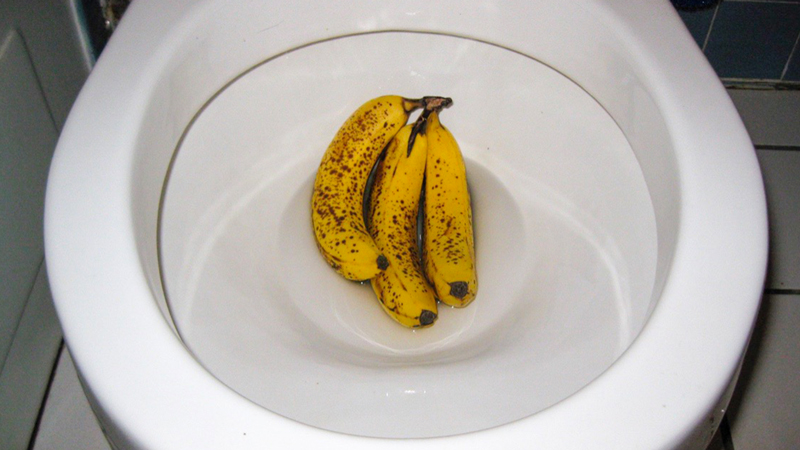Is it Safe to Dispose of Food in the Toilet?
Is it Safe to Dispose of Food in the Toilet?
Blog Article
Just about every person maintains their personal way of thinking when it comes to What Can Happen If You Flush Food Down the Toilet?.

Introduction
Many people are often faced with the dilemma of what to do with food waste, especially when it pertains to leftovers or scraps. One typical concern that arises is whether it's all right to purge food down the toilet. In this article, we'll explore the reasons that people could consider flushing food, the repercussions of doing so, and alternate approaches for appropriate disposal.
Reasons why people could take into consideration flushing food
Lack of recognition
Some people might not know the prospective injury caused by purging food down the toilet. They may incorrectly believe that it's a harmless method.
Convenience
Flushing food down the toilet might feel like a fast and easy solution to disposing of unwanted scraps, especially when there's no neighboring trash bin readily available.
Idleness
Sometimes, people might merely select to flush food out of sheer negligence, without considering the consequences of their activities.
Effects of flushing food down the commode
Ecological influence
Food waste that ends up in waterways can add to pollution and injury water ecosystems. In addition, the water utilized to purge food can strain water sources.
Plumbing issues
Flushing food can lead to clogged pipes and drains pipes, triggering costly plumbing fixings and hassles.
Sorts of food that ought to not be purged
Fibrous foods
Foods with fibrous textures such as celery or corn husks can obtain entangled in pipelines and create obstructions.
Starchy foods
Starchy foods like pasta and rice can take in water and swell, resulting in clogs in pipes.
Oils and fats
Greasy foods like bacon or cooking oils ought to never be flushed down the toilet as they can solidify and cause blockages.
Proper disposal approaches for food waste
Utilizing a waste disposal unit
For homes equipped with waste disposal unit, food scraps can be ground up and flushed with the plumbing system. However, not all foods are suitable for disposal in this fashion.
Recycling
Certain food packaging materials can be reused, decreasing waste and lessening ecological effect.
Composting
Composting is an environment-friendly means to deal with food waste. Organic products can be composted and utilized to enhance soil for gardening.
The significance of correct waste management
Minimizing environmental injury
Appropriate waste administration methods, such as composting and recycling, help decrease contamination and preserve natural resources for future generations.
Safeguarding pipes systems
By staying clear of the method of flushing food down the bathroom, homeowners can stop pricey plumbing repair work and preserve the stability of their plumbing systems.
Verdict
To conclude, while it might be tempting to flush food down the toilet for ease, it is essential to recognize the prospective repercussions of this activity. By embracing correct waste monitoring techniques and getting rid of food waste sensibly, people can add to healthier plumbing systems and a cleaner setting for all.
FLUSH FOOD DOWN THE TOILET?
FLUSHING FOOD CAN CAUSE BLOCKED DRAINS IN YOUR HOME
All of the plumbing fixtures in your home are connected to the same sewer pipe outside of your home. This outdoor sewer pipe is responsible for transporting all the wastewater from your home to the Council sewer mains. Even small pieces of food that go down the kitchen sink can cause problems for your sewer. It should therefore be obvious that flushing larger bits of food, such as meat, risks a clog in either the toilet itself or the sewer pipes. Flushing greasy food is even more problematic because oil coagulates when it cools, coating the interior lining of your pipes.
THE TOILET IS NOT A BIN
Food isn’t the only thing that people shouldn’t be flushing down the toilet. People use the toilet to dispose of all kinds of things such as tampons, makeup wipes, dental floss, kitty litter and even underwear. Water goes to great lengths to educate residents about the high costs and stress placed on wastewater treatment systems simply from people flushing the wrong stuff down the toilet. It costs taxpayers millions of dollars each year, and homeowners thousands in blocked drain repairs.
FLUSHING FOOD IS A WASTE OF WATER
Flushing food is a waste of our most precious resource - water. In June this year Level 1 water restrictions were introduced to protect water supply from drought conditions. Much of New South Wales continues to be affected by prolonged drought with recent figures revealing up to 97 per cent of the state remains in drought. Depending on whether you have a single or dual flush toilet, every single flush uses between five and 11 litres of water. In the current climate this is a huge amount of water to be wasting on flushing food that should be placed in the bin (or better yet, the compost).
https://www.jabplumbingsolutions.com.au/blog/can-you-flush-food-down-the-toilet

I recently found that article on Is it safe to flush food (especially rice) down the toilet? while doing a search on the web. Do you know someone else who is enthusiastic about the niche? Why not promote it. We thank you for reading our article about Think Twice Before Flushing Food Down Your Toilet.
Call Today Report this page